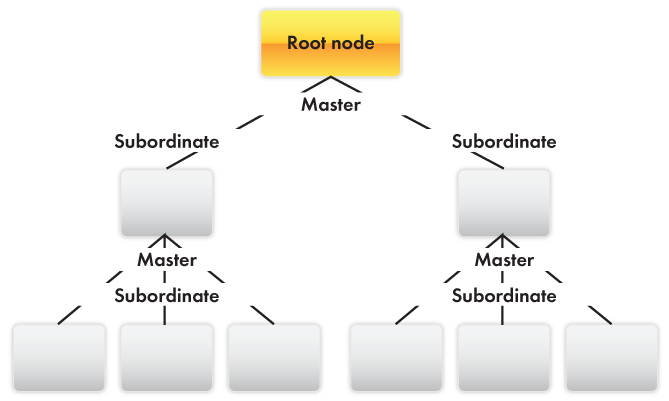As we have already mentioned above, a distributed infobase should have a clearly defined tree structure. The number of levels in that structure is unlimited. An explicit master-subordinate relationship between each pair of linked nodes is required (fig. 24.18).

Fig. 24.18. Distributed infobase structure
So, each node in that structure can have an unlimited number of subordinate nodes (or none at all). Additionally, each node except one should have a master node, and the root node is the only one with no master. This rigidly defined node structure is essential for specifying the migration pattern for data and configuration changes.
A configuration can only be changed in a node that has no master node (in the root node). Data changes can be made in any node.
Configuration changes are transferred down from the master node to subordinate ones. Data changes can be transferred between any linked nodes.
Collisions are resolved on the basis of master/subordinate relationships as well. If changes are made simultaneously in a master node and in a subordinate one, only the changes to the master node are accepted and changes to the subordinate node are discarded.
For any subordinate node an initial image can be created. An initial image is an infobase created on the basis of the configuration and data of the master node in compliance with the rules specified in the exchange plan. The initial node image creation procedure can be performed repeatedly. Every time it is performed, it deletes all the change records for the subordinate node from the master node infobase. Once an initial image is created, it is ready for exchange with the master node.
Creating an initial image is the recommended method of subordinate node creation in a distributed infobase.
Next page: The task at hand

